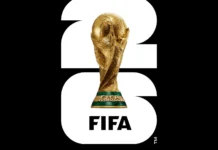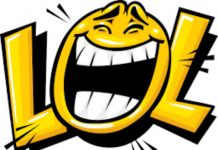The World Anti-Doping Agency (WADA) has released the Prohibited List appended below which designates what substances and methods are prohibited both in- and out-of-competition, and which substances are banned in particular sports. The list was approved by the WADA Executive Committee and comes into force on 1 January 2017.
2017 List of Prohibited Substances and Methods
PROHIBITED SUBSTANCES
- NON-APPROVED SUBSTANCES
- Any pharmacological substance which is not
addressed by any of the subsequent sections of the
List and with no current approval by any governmental
regulatory health authority for human therapeutic use
(e.g. drugs under pre-clinical or clinical development
or discontinued, designer drugs, substances approved
only for veterinary use) is prohibited at all times
- Any pharmacological substance which is not
- ANABOLIC AGENTS
- Anabolic agents are prohibited.
—————————————————————————————————
1. ANABOLIC ANDROGENIC STEROIDS (AAS)
a. Exogenous* AAS, including:
1-Androstenediol (5α-androst-1-ene-3β,17β-diol);
1-Androstenedione (5α-androst-1-ene-3,17-dione);
1-Testosterone (17β-hydroxy-5α-androst-1-en-3-one);
4-Hydroxytestosterone (4,17β-dihydroxyandrost-4-en-3-one);
Bolandiol (estr-4-ene-3β,17β-diol);
Bolasterone;
Calusterone;
Clostebol;
Danazol ([1,2]oxazolo[4′,5′:2,3]pregna-4-en-20-yn-17α-ol);
Dehydrochlormethyltestosterone (4-chloro-17β-hydroxy-
17α-methylandrosta-1,4-dien-3-one);
Desoxymethyltestosterone (17α-methyl-5α-androst-
2-en-17β-ol);
Drostanolone;
Ethylestrenol (19-norpregna-4-en-17α-ol);
Fluoxymesterone;
Formebolone;
Furazabol (17α-methyl [1,2,5]oxadiazolo[3′,4′:2,3]-5α-
androstan-17β-ol);
Gestrinone;
Mestanolone;
Mesterolone;
Metandienone (17β-hydroxy-17α-methylandrosta-1,4-dien-
3-one);
Metenolone;
Methandriol;
Methasterone (17β-hydroxy-2α,17α-dimethyl-5α-
androstan-3-one);
Methyldienolone (17β-hydroxy-17α-methylestra-4,9-dien-
3-one);
Methyl-1-testosterone (17β-hydroxy-17α-methyl-5α-
androst-1-en-3-one);
Methylnortestosterone (17β-hydroxy-17α-methylestr-4-en-
3-one);
Methyltestosterone;
Metribolone (methyltrienolone, 17β-hydroxy-17α-
methylestra-4,9,11-trien-3-one);
Mibolerone;
Norboletone;
Norclostebol;
Norethandrolone;
Oxabolone;
Oxandrolone;
Oxymesterone;
Oxymetholone;
Prostanozol (17β-[(tetrahydropyran-2-yl)oxy]-1’Hpyrazolo[3,4:2,3]-5α-androstane);
Quinbolone;
Stanozolol;
Stenbolone;
Tetrahydrogestrinone (17-hydroxy-18a-homo-19-nor-17α-
pregna-4,9,11-trien-3-one);
Trenbolone (17β-hydroxyestr-4,9,11-trien-3-one);
and other substances with a similar chemical structure
or similar biological effect(s).
b. Endogenous** AAS when administered exogenously:
19-Norandrostenediol (estr-4-ene-3,17-diol);
19-Norandrostenedione (estr-4-ene-3,17-dione);
Androstenediol (androst-5-ene-3β,17β-diol);
Androstenedione (androst-4-ene-3,17-dione);
Boldenone;
Boldione (androsta-1,4-diene-3,17-dione);
Dihydrotestosterone (17β-hydroxy-5α-androstan-3-one);
Nandrolone (19-nortestosterone);
Prasterone (dehydroepiandrosterone, DHEA,
3β-hydroxyandrost-5-en-17-one);
Testosterone;
and their metabolites and isomers, including but
not limited to:
3β-Hydroxy-5α-androstan-17-one;
5α-Androst-2-ene-17-one;
5α-Androstane-3α,17α-diol;
5α-Androstane-3α,17β-diol;
5α-Androstane-3β,17α-diol;
5α-Androstane-3β,17β-diol;
5β-Androstane-3α,17β-diol;
7α-Hydroxy-DHEA;
7β-Hydroxy-DHEA;
4-Androstenediol (androst-4-ene-3β, 17β-diol);
5-Androstenedione (androst-5-ene-3,17-dione);
7-Keto-DHEA;
19-Norandrosterone;
19-Noretiocholanolone;
Androst-4-ene-3α,17α-diol;
Androst-4-ene-3α,17β-diol;
Androst-4-ene-3β,17α-diol;
Androst-5-ene-3α,17α-diol;
Androst-5-ene-3α,17β-diol;
Androst-5-ene-3β,17α-diol;
Androsterone;
Epi-dihydrotestosterone;
Epitestosterone;
Etiocholanolone.
2. OTHER ANABOLIC AGENTS
Including, but not limited to:
• Clenbuterol;
• Selective androgen receptor modulators (SARMs, e.g.
andarine and ostarine);
• Tibolone;
• Zeranol;
• Zilpaterol.
For purposes of this section:
* “exogenous” refers to a substance which is not ordinarily
produced by the body naturally.
** “endogenous” refers to a substance which is ordinarily produced
by the body naturally
- PEPTIDE HORMONES, GROWTH FACTORS, RELATED SUBSTANCES, AND MIMETICS
The following substances, and other substances with
similar chemical structure or similar biological effect(s),
are prohibited:
1. Erythropoietin-Receptor agonists:
1.1 Erythropoiesis-Stimulating Agents (ESAs) including e.g.
Darbepoietin (dEPO);
Erythropoietins (EPO);
EPO-Fc;
EPO-mimetic peptides (EMP), e.g. CNTO 530 and
peginesatide;
GATA inhibitors, e.g. K-11706;
Methoxy polyethylene glycol-epoetin beta (CERA);
Transforming Growth Factor-β (TGF-β) inhibitors,
e.g. sotatercept, luspatercept;
1.2 Non-erythropoietic EPO-Receptor agonists, e.g.
ARA-290;
Asialo EPO;
Carbamylated EPO.
2. Hypoxia-inducible factor (HIF) stabilizers, e.g. cobalt,
molidustat and roxadustat (FG-4592); and HIF activators,
e.g. argon and xenon.
3. Chorionic Gonadotrophin (CG) and Luteinizing Hormone
(LH) and their releasing factors, e.g. buserelin,
gonadorelin and leuprorelin, in males.
4. Corticotrophins and their releasing factors,
e.g. corticorelin.
5. Growth Hormone (GH) and its releasing factors including:
• Growth Hormone Releasing Hormone (GHRH) and its
analogues, e.g. CJC-1295, sermorelin and
tesamorelin;
• Growth Hormone Secretagogues (GHS), e.g. ghrelin
and ghrelin mimetics, e.g. anamorelin and ipamorelin;
• GH-Releasing Peptides (GHRPs), e.g. alexamorelin,
GHRP-6, hexarelin, and pralmorelin (GHRP-2).
Additional prohibited growth factors:
Fibroblast Growth Factors (FGFs);
Hepatocyte Growth Factor (HGF);
Insulin-like Growth Factor-1 (IGF-1) and its analogues;
Mechano Growth Factors (MGFs);
Platelet-Derived Growth Factor (PDGF);
Vascular-Endothelial Growth Factor (VEGF) and any other
growth factor affecting muscle, tendon or ligament protein
synthesis/degradation, vascularisation, energy utilization,
regenerative capacity, or fibre type switching.
- BETA-2 AGONISTS
All selective and non-selective beta-2 agonists,
including all optical isomers, are prohibited.
Including, but not limited to:
Fenoterol;
Formoterol;
Higenamine;
Indacaterol;
Olodaterol;
Procaterol;
Reproterol;
Salbutamol;
Salmeterol;
Terbutaline;
Vilanterol.
Except:
• Inhaled salbutamol: maximum 1600 micrograms over
24 hours, not to exceed 800 micrograms every 12 hours;
• Inhaled formoterol: maximum delivered dose of
54 micrograms over 24 hours;
• Inhaled salmeterol: maximum 200 micrograms over
24 hours.
The presence in urine of salbutamol in excess of 1000 ng/mL
or formoterol in excess of 40 ng/mL is presumed not to be
an intended therapeutic use of the substance and will be
considered as an Adverse Analytical Finding (AAF) unless
the Athlete proves, through a controlled pharmacokinetic
study, that the abnormal result was the consequence of
the use of the therapeutic dose (by inhalation) up to the
maximum dose indicated above.
- HORMONE AND METABOLIC MODULATORS
The following hormone and metabolic modulators
are prohibited:
1. Aromatase inhibitors including, but not limited to:
4-Androstene-3,6,17 trione (6-oxo);
Aminoglutethimide;
Anastrozole;
Androsta-1,4,6-triene-3,17-dione (androstatrienedione);
Androsta-3,5-diene-7,17-dione (arimistane);
Exemestane;
Formestane;
Letrozole;
Testolactone.
2. Selective estrogen receptor modulators (SERMs)
including, but not limited to:
Raloxifene;
Tamoxifen;
Toremifene.
3. Other anti-estrogenic substances including, but not
limited to:
Clomiphene;
Cyclofenil;
Fulvestrant.
4. Agents modifying myostatin function(s) including, but
not limited, to: myostatin inhibitors.
5. Metabolic modulators:
5.1 Activators of the AMP-activated protein kinase
(AMPK), e.g. AICAR; and
Peroxisome Proliferator Activated Receptor δ
(PPARδ) agonists, e.g. GW 1516;
5.2 Insulins and insulin-mimetics;
5.3 Meldonium;
5.4 Trimetazidine.
- DIURETICS AND MASKING AGENTS
The following diuretics and masking agents are
prohibited, as are other substances with a similar chemical
structure or similar biological effect(s).
Including, but not limited to:
• Desmopressin; probenecid; plasma expanders,
e.g. glycerol and intravenous administration of albumin,
dextran, hydroxyethyl starch and mannitol;
• Acetazolamide; amiloride; bumetanide; canrenone;
chlortalidone; etacrynic acid; furosemide; indapamide;
metolazone; spironolactone; thiazides, e.g. bendroflumethiazide, chlorothiazide and hydrochlorothiazide;
triamterene and vaptans, e.g. tolvaptan.
Except:
• Drospirenone; pamabrom; and ophthalmic use of
carbonic anhydrase inhibitors (e.g. dorzolamide,
brinzolamide);
• Local administration of felypressin in dental
anaesthesia.
The detection in an Athlete’s Sample at all times or
In-Competition, as applicable, of any quantity of
the following substances subject to threshold
limits: formoterol, salbutamol, cathine, ephedrine,
methylephedrine and pseudoephedrine, in conjunction
with a diuretic or masking agent, will be considered as
an Adverse Analytical Finding (AAF) unless the Athlete
has an approved Therapeutic Use Exemption (TUE) for
that substance in addition to the one granted for the
diuretic or masking agent.
PROHIBITED METHODS
- MANIPULATION OF BLOOD AND BLOOD COMPONENTS
The following are prohibited:
1. The Administration or reintroduction of any quantity of
autologous, allogenic (homologous) or heterologous
blood, or red blood cell products of any origin into the
circulatory system.
2. Artificially enhancing the uptake, transport or delivery
of oxygen.
Including, but not limited to:
Perfluorochemicals; efaproxiral (RSR13) and modified
haemoglobin products, e.g. haemoglobin-based blood
substitutes and microencapsulated haemoglobin
products, excluding supplemental oxygen by inhalation.
3. Any form of intravascular manipulation of the blood or
blood components by physical or chemical means. - CHEMICAL AND PHYSICAL MANIPULATION
The following are prohibited:
1. Tampering, or Attempting to Tamper, to alter the
integrity and validity of Samples collected during
Doping Control.
Including, but not limited to:
Urine substitution and/or adulteration, e.g. proteases.
2. Intravenous infusions and/or injections of more than
50 mL per 6 hour period except for those legitimately
received in the course of hospital admissions, surgical
procedures or clinical investigations. - GENE DOPING
The following, with the potential to enhance sport
performance, are prohibited:
1. The transfer of polymers of nucleic acids or nucleic
acid analogues.
2. The use of normal or genetically modified cells.
Substances And Methods PROHIBITED IN COMPETITION
IN ADDITION TO THE CATEGORIES S0 TO S5 AND M1 TO M3 DEFINED ABOVE, THE FOLLOWING CATEGORIES ARE PROHIBITED IN-COMPETITION:
PROHIBITED SUBSTANCES
- STIMULANTS
- All stimulants, including all optical isomers, e.g.
d- and l- where relevant, are prohibited.
- All stimulants, including all optical isomers, e.g.
Stimulants include:
a: Non-Specified Stimulants:
Adrafinil;
Amfepramone;
Amfetamine;
Amfetaminil;
Amiphenazole;
Benfluorex;
Benzylpiperazine;
Bromantan;
Clobenzorex;
Cocaine;
Cropropamide;
Crotetamide;
Fencamine;
Fenetylline;
Fenfluramine;
Fenproporex;
Fonturacetam [4-phenylpiracetam (carphedon)];
Furfenorex;
Lisdexamfetamine;
Mefenorex;
Mephentermine;
Mesocarb;
Metamfetamine(d-);
p-methylamphetamine;
Modafinil;
Norfenfluramine;
Phendimetrazine;
Phentermine;
Prenylamine;
Prolintane.
A stimulant not expressly listed in this section
is a Specified Substance
b: Specified Stimulants.
Including, but not limited to:
4-Methylhexan-2-amine (methylhexaneamine);
Benzfetamine;
Cathine**;
Cathinone and its analogues, e.g. mephedrone,
methedrone, and α- pyrrolidinovalerophenone;
Dimethylamphetamine;
Ephedrine***;
Epinephrine**** (adrenaline);
Etamivan;
Etilamfetamine;
Etilefrine;
Famprofazone;
Fenbutrazate;
Fencamfamin;
Heptaminol;
Hydroxyamfetamine (parahydroxyamphetamine);
Isometheptene;
Levmetamfetamine;
Meclofenoxate;
Methylenedioxymethamphetamine;
Methylephedrine***;
Methylphenidate;
Nikethamide;
Norfenefrine;
Octopamine;
Oxilofrine (methylsynephrine);
Pemoline;
Pentetrazol;
Phenethylamine and its derivatives;
Phenmetrazine;
Phenpromethamine;
Propylhexedrine;
Pseudoephedrine*****;
Selegiline;
Sibutramine;
Strychnine;
Tenamfetamine (methylenedioxyamphetamine);
Tuaminoheptane;
and other substances with a similar chemical structure
or similar biological effect(s).
Except:
• Clonidine;
• Imidazole derivatives for topical/ophthalmic use and
those stimulants included in the 2017 Monitoring
Program*.
* Bupropion, caffeine, nicotine, phenylephrine,
phenylpropanolamine, pipradrol, and synephrine: These
substances are included in the 2017 Monitoring Program, and
are not considered Prohibited Substances.
** Cathine: Prohibited when its concentration in urine is greater
than 5 micrograms per milliliter.
*** Ephedrine and methylephedrine: Prohibited when the
concentration of either in urine is greater than 10 micrograms
per milliliter.
**** Epinephrine (adrenaline): Not prohibited in local administration,
e.g. nasal, ophthalmologic, or co-administration with local
anaesthetic agents.
***** Pseudoephedrine: Prohibited when its concentration in urine
is greater than 150 micrograms per milliliter.
- NARCOTICS
Prohibited:
Buprenorphine;
Dextromoramide;
Diamorphine (heroin);
Fentanyl and its derivatives;
Hydromorphone;
Methadone;
Morphine;
Nicomorphine;
Oxycodone;
Oxymorphone;
Pentazocine;
Pethidine.
CANNA
- CANNABINOIDS
Prohibited:
• Natural, e.g. cannabis, hashish and marijuana, or
synthetic Δ9-tetrahydrocannabinol (THC).
• Cannabimimetics, e.g. “Spice”, JWH-018, JWH-073,
HU-210.
- GLUCOCORTICOIDS
All glucocorticoids are prohibited when administered
by oral, intravenous, intramuscular, or rectal routes.















